5 Facts About Brazilian Black Tarantula Eating Habits
The Brazilian Black Tarantula (Grammostola pulchra) is a captivating creature, and understanding its eating habits is crucial for its well-being. These spiders are relatively docile and make excellent pets for experienced arachnid keepers. Their feeding behavior is fascinating, offering a glimpse into their predatory instincts. In this article, we’ll delve into five key facts about what these tarantulas eat, how often they eat, and important safety precautions for their care, ensuring you provide the best possible environment for your pet to thrive. Knowing the right food and how much to offer can significantly impact the health and longevity of your Brazilian Black Tarantula. Let’s explore what makes this spider tick!
What Do Brazilian Black Tarantulas Eat?
Brazilian Black Tarantulas are primarily insectivores, meaning their diet consists mainly of insects. In the wild, they are opportunistic hunters, consuming whatever prey they can capture. As pets, their diet can be carefully controlled to ensure optimal nutrition and health. It’s important to provide a varied diet that mimics their natural feeding patterns. A diverse diet provides a wider range of nutrients, contributing to the overall health of the tarantula and supporting the molting process. Let’s break down the specifics of what they eat and how to provide for them in captivity.
Common Insects Brazilian Black Tarantulas Consume
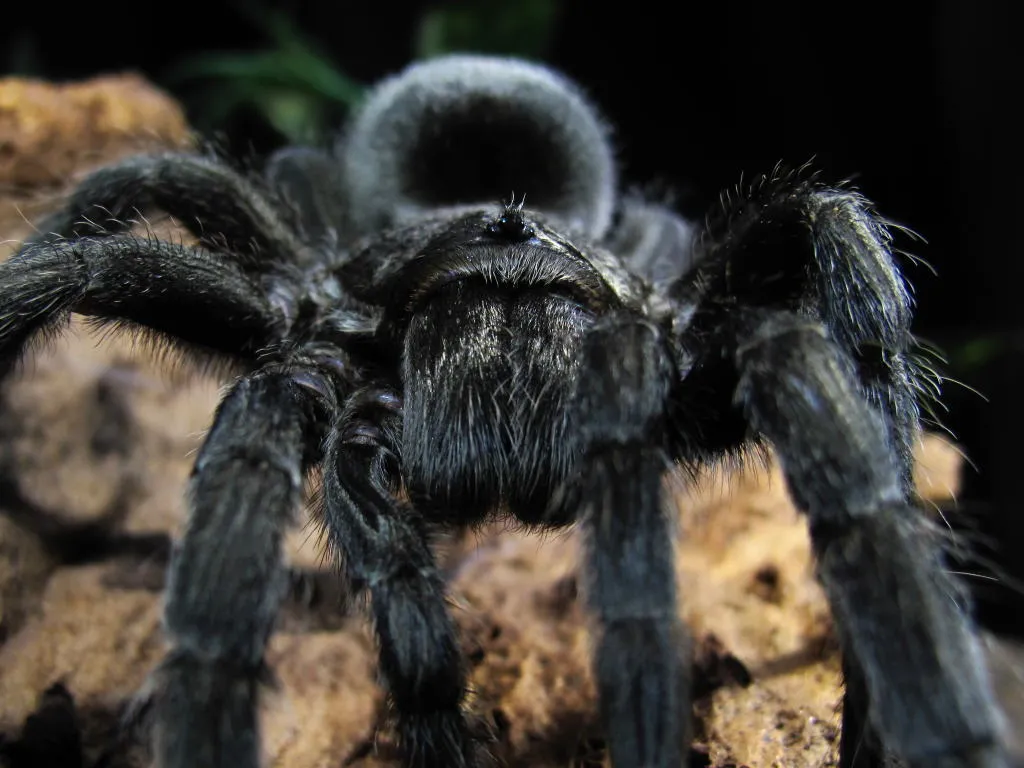
The cornerstone of a Brazilian Black Tarantula’s diet is insects. Several insect types are readily available and suitable as food sources. These insects should be gut-loaded before being offered to the tarantula to increase their nutritional value. Gut-loading involves feeding the insects a nutritious diet a few days before they are offered to the tarantula, enriching them with vitamins and minerals that the spider can then consume.
The Role of Crickets in Their Diet
Crickets are a popular and easily accessible food option. They are relatively easy to breed and maintain, making them a convenient choice for many keepers. Crickets provide a good source of protein, essential for the growth and development of the tarantula. However, crickets should be gut-loaded with nutritious foods like vegetables and commercial cricket food to enhance their nutritional value. This process ensures that the tarantula receives a balanced diet, supporting their overall health.
Nutritional Value of Roaches
Roaches, such as Dubia roaches, are another excellent food source. They are generally higher in protein and have a better nutritional profile than crickets. Roaches are also less likely to burrow or hide, making them easier for the tarantula to find and consume. Like crickets, roaches should also be gut-loaded. A diet of fresh vegetables and fruits, along with commercial roach food, will ensure that they are packed with nutrients before being offered to your tarantula. This careful feeding helps maintain the health of your Brazilian Black Tarantula.
Other Food Sources Brazilian Black Tarantulas Enjoy
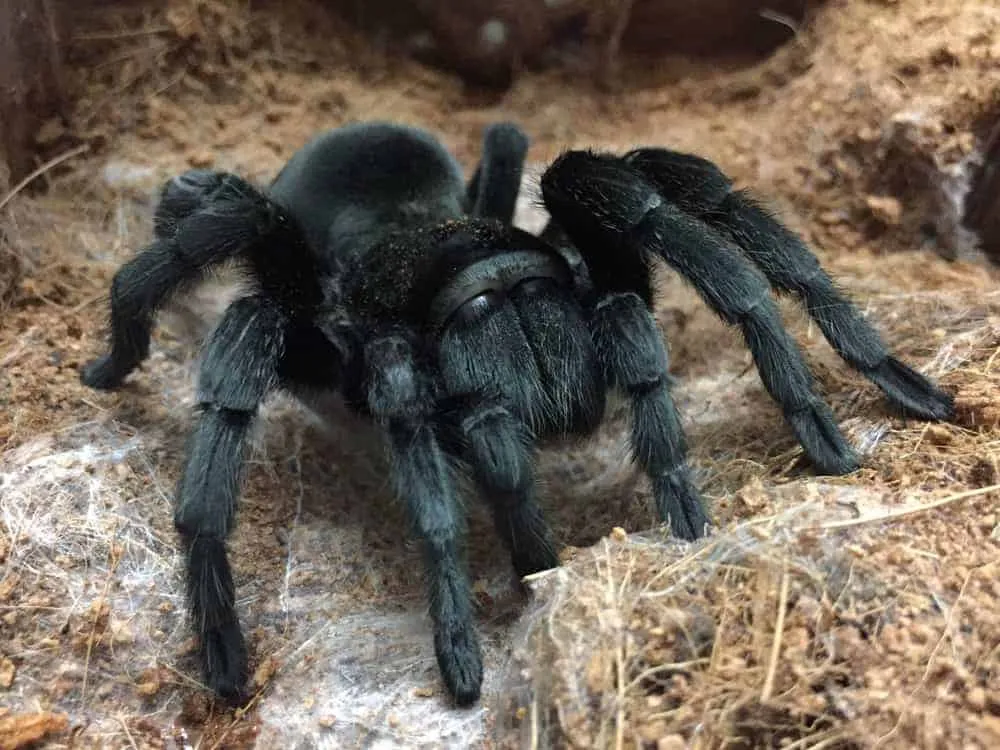
While insects form the bulk of their diet, Brazilian Black Tarantulas can also benefit from a varied diet. This variety helps ensure that the tarantula receives a wide range of essential nutrients, contributing to its overall health and well-being. Offering occasional treats that are appropriate and safe is a great way to enrich their diet and provide mental stimulation. Remember to always prioritize the health and safety of your tarantula when considering alternative food sources.
Importance of Worms and Mealworms
Worms, such as mealworms, can be a supplemental food source. Mealworms are readily available, but they have a higher fat content, so they should be offered sparingly. These can be a good treat but should not be the primary food source. Feeding too many mealworms can lead to obesity in your tarantula. Always offer them in moderation and as a part of a balanced diet to ensure they contribute to the tarantula’s health.
Occasional Mammals and Small Lizards
In the wild, Brazilian Black Tarantulas may occasionally consume small mammals or lizards. However, these are not recommended for captive tarantulas due to the risk of parasites and other potential health issues. It’s best to stick to a diet of gut-loaded insects to minimize health risks. Keeping your tarantula’s diet simple and safe ensures a long and healthy life for your pet, and reduces the chances of introducing any health complications.
How Often Do Brazilian Black Tarantulas Eat?
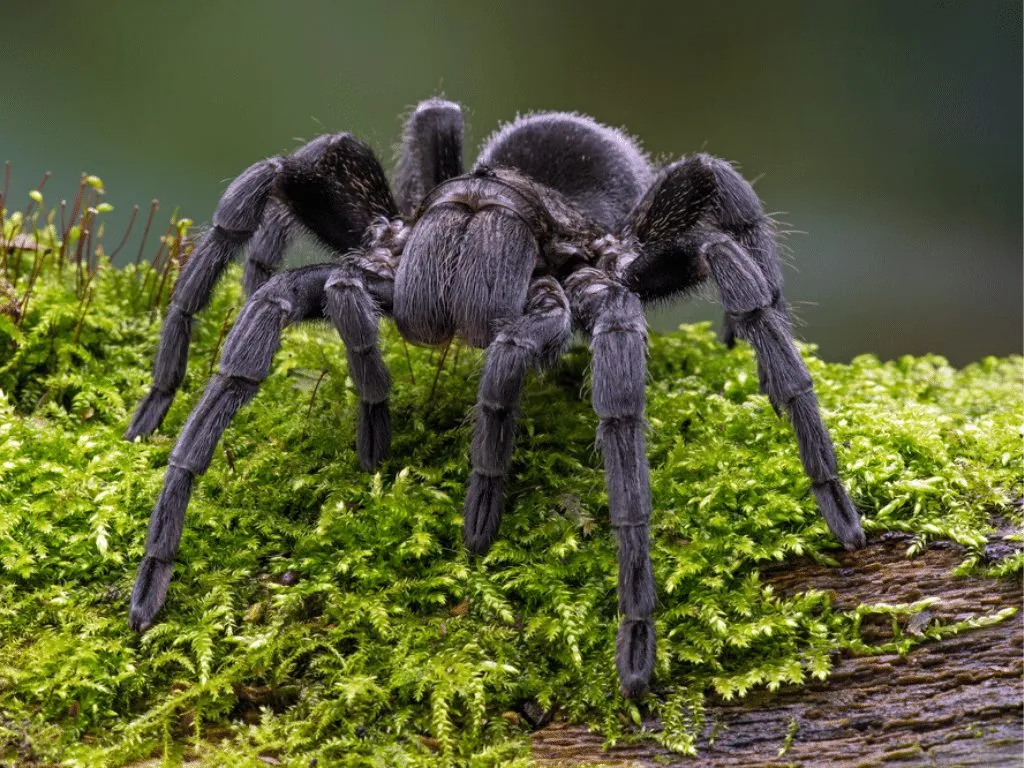
The frequency of feeding depends on the age and size of the tarantula. Spiderlings and juveniles have higher metabolic rates and need to eat more frequently than adults. Overfeeding is as dangerous as underfeeding, so it is important to find a balance that keeps your tarantula healthy. Adjusting the feeding schedule based on your tarantula’s needs is a crucial part of their care. Understanding their requirements helps provide them with the right nutrition for optimal health and growth.
Feeding Frequency Based on Age
Spiderlings (young tarantulas) need to be fed more often, perhaps every other day or every few days. As they grow, the feeding frequency can be reduced. Sub-adults can be fed once or twice a week, depending on their appetite and growth rate. Adults may only need to be fed once a week or even less. Always observe your tarantula and adjust the feeding schedule based on their behavior and whether they have eaten the previous meal.
Adjusting Feeding During Molting
During the molting process, tarantulas often refuse food. It is important not to force-feed them during this time. Molting is a stressful process, and they need to conserve energy. If your tarantula has recently molted, wait a few days before offering food, giving their new exoskeleton time to harden. This ensures they can successfully digest and use the nutrients from their meal. Always provide water, regardless of their feeding habits.
Signs of a Hungry Tarantula
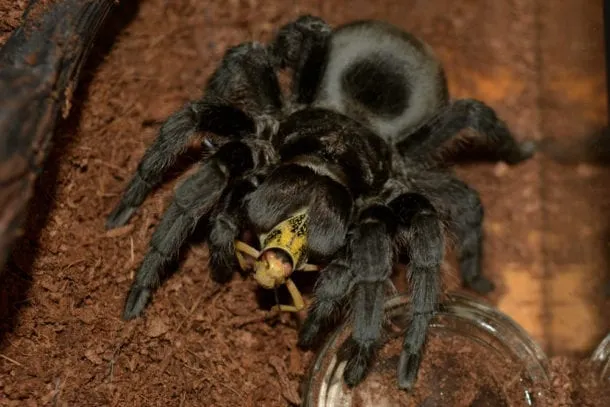
A hungry tarantula will often be more active and may pace around its enclosure, searching for food. They may also become more receptive to being fed. While observing your tarantula, note if they approach the food with enthusiasm and readily consume it. Keeping track of their eating habits can help you tailor their diet to their specific needs. Recognizing these signs allows you to provide the appropriate amount of food and maintain their health.
How to Ensure Proper Hydration
Proper hydration is crucial for a tarantula’s overall health. They need water to digest food, stay hydrated, and facilitate molting. Providing clean water is a basic but essential part of their care. Ensuring your tarantula has access to clean water at all times supports digestion, hydration, and molting. The best practices for hydration include regular water changes and maintaining a suitable environment.
Why Water is Essential for Digestion
Tarantulas use water to help break down their food. Without adequate hydration, they can experience digestive problems and other health issues. Water is vital for the proper functioning of their internal systems. Make sure to provide a water source and regularly check and replenish it to ensure your tarantula is well hydrated. Proper digestion supports nutrient absorption and ensures your tarantula gets the most from its diet.
Best Ways to Provide Water
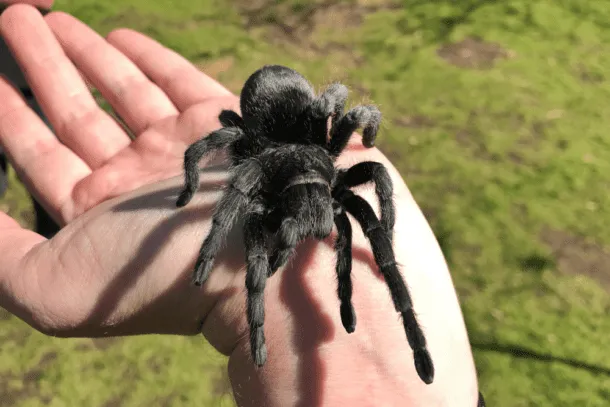
A shallow water dish is a simple yet effective way to provide water. The dish should be shallow enough to prevent drowning but deep enough for the tarantula to access water. Using a cotton ball or sponge in the water dish can also reduce the risk of drowning. Regular cleaning of the water dish is necessary to prevent the growth of bacteria and ensure the water is always fresh. Clean water is an essential component of a healthy habitat.
Feeding Safety and Precautions
Safety should always be a priority when feeding a Brazilian Black Tarantula. Both the tarantula and the keeper’s well-being must be considered. Overfeeding, improper handling, and unclean enclosures can pose significant risks. Always exercise caution and follow best practices to ensure a safe and healthy environment. Understanding the potential dangers and knowing how to avoid them contributes to a positive experience for both the keeper and the tarantula.
Avoiding Overfeeding
Overfeeding can lead to obesity, which can shorten a tarantula’s lifespan. It’s essential to feed your tarantula the appropriate amount based on its age and size. Avoid offering food too frequently or providing too much food at once. Monitor your tarantula’s abdomen; a slightly plump abdomen is normal, but an excessively large one could indicate overfeeding. Reduce feeding frequency if you see signs of overfeeding, such as a reluctance to eat or an enlarged abdomen.
Safe Handling During Feeding
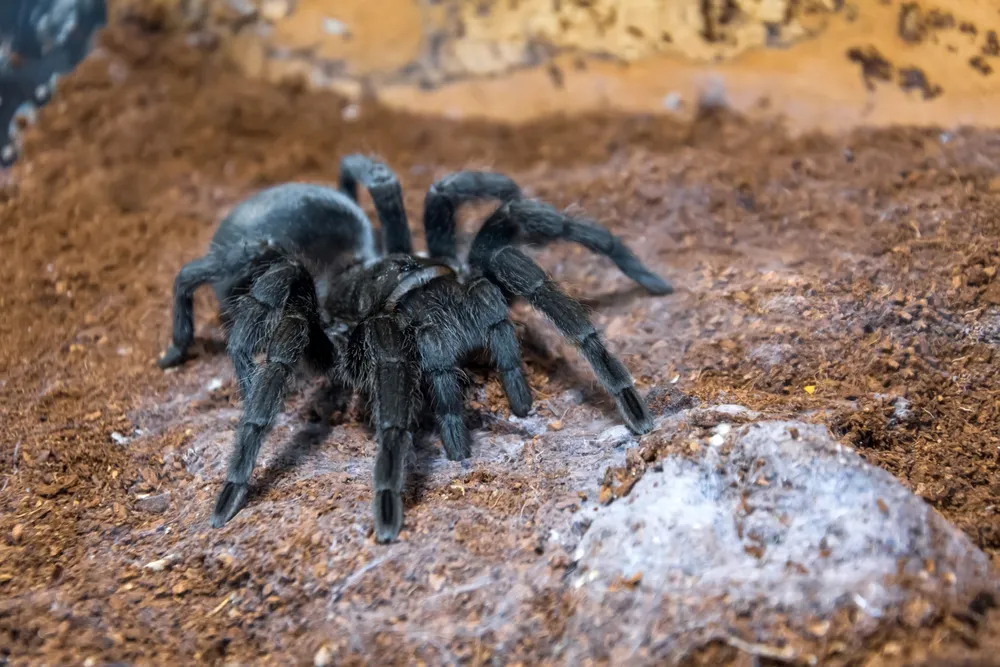
When feeding, avoid handling the tarantula directly, if possible. Use long tongs or tweezers to offer food, minimizing the risk of being bitten. If you must handle the tarantula, do so carefully, being mindful of its movements and any potential defensive behaviors. Always wash your hands before and after handling anything in the enclosure. Being cautious reduces the risk of both injury to you and stress to the tarantula. Respecting the tarantula’s space is also crucial.
Recognizing and Managing Leftover Food
If your tarantula doesn’t eat all the food you provide, remove the leftovers within 24 hours. Leaving dead insects in the enclosure can lead to the growth of mold and mites, which can be harmful to your tarantula. Regular cleaning and enclosure maintenance are essential for preventing such problems. A clean enclosure contributes to a healthy and safe environment for your pet. Remove any uneaten food promptly to maintain hygiene and prevent potential health issues.
Conclusion Enjoy Watching Your Tarantula Eat
Understanding the eating habits of your Brazilian Black Tarantula is a key part of providing good care. By providing a balanced diet, ensuring proper hydration, and taking necessary safety precautions, you can ensure your tarantula thrives. Watching your tarantula eat can be fascinating. By understanding the dos and don’ts of their diet, you can provide them with a long, healthy, and engaging life. Remember to always do your research and consult with experienced keepers or veterinarians if you have any concerns about your tarantula’s health or feeding habits.
